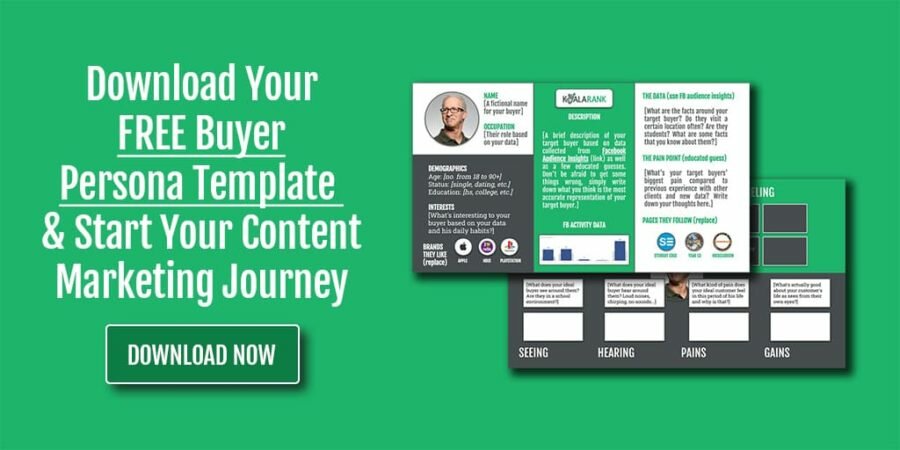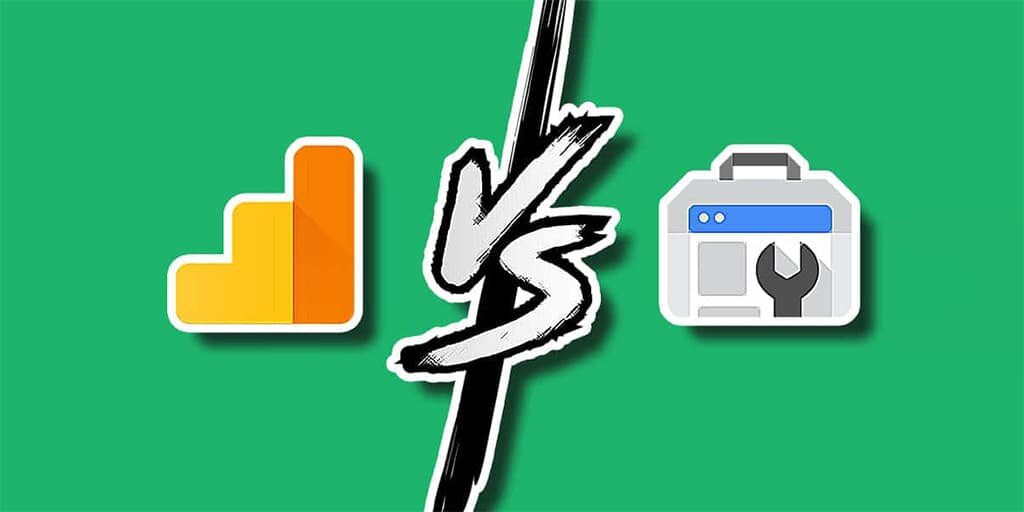- The buyer persona is a short description or profile of what your ideal buyer looks like compared to the product or service you offer.
- The writing guidelines dictate the tone and overall style of your writing, giving your ideal buyer a reason to keep checking out your content.
- The editorial calendar is a tool to help members on your team collaborate when they’re strategizing, creating, and promoting your content.
Already thought of using content marketing to generate more leads for your business but don’t know which deliverables you should be asking for?
It’s difficult to tell what you should expect when you don’t have years of marketing experience behind you. So, what are some tangible deliverables you should get from a content strategist that deliver actual business results?
That’s what you’re going to learn today.
What is a content strategy?
A content strategy is the engine responsible for all results achieved with your content marketing efforts. Brian Dean from Backlinko defines it as “an organization’s high-level approach for creating and marketing content.”
Having a content strategy means using different research tools and methods (SEO tools, buyer personas, online communities…), and adapting the results you get from that research to produce and promote your content, leading you to generate more leads and customers for your business.
Why preparing and maintaining a strategy matters
Here’s exactly why it’s important to have a content strategy in place:
» It enables your team members to collaborate more easily
If you’re a one-man show, you might be able to do everything yourself without ever needing a content strategy. But what happens if you have a whole team working on creating and promoting your content?
It gets messy…
Just imagine having a team of three writers, an editor, and an outreach expert. How are you going to organize the whole process when there is no “plan” they can follow and no tools they can use to collaborate and communicate?
You can’t.
That’s where a content strategy comes in.
Having a strategy in place allows your team members to know exactly what pieces are to be published and how they work together.
» It provides you with a data-driven process you can follow
Having a content strategy means you have a consistent process for strategizing, creating, and promoting your content.
Having this in place means you’re not confused or overwhelmed because you know what to do and why you’re doing it.
Adopting a data-driven process means knowing:
- What your target audience’s pains and problems are
- Who your competitors are and what they’re doing well
- What keywords to target based on Google search data
- What type of content to produce based on search intent
- How that content should be written and organized
- How many times you should publish every month
This gives you an accurate approach to content creation and promotion while ironing out issues with your messaging by keeping it consistent.
» It saves you precious amounts of time and money
There are hundreds of digital marketing tools and tactics out there. Which one should you choose? And how can you be sure it will deliver results?
There is so much information available about marketing online that it can be overwhelming or confusing to pick one of the many tactics.
That’s where a content strategy definitely helps.
It’ll show you exactly what tools to use, what metrics to look out for, and how to adapt these results to get leads and customers for your business.
Having a strategy will save you the money you would have spent on expensive software tools and the time you would’ve wasted trying different tactics.
» It helps people find your content
According to Ahrefs, 95% of blog posts don’t rank for any keyword during the first year. This means the vast majority of blog posts will never be read.
And it’s because they weren’t written with a strategy in place. Sure, you can rank by chance on a few terms, but you can’t build a business around that.
Instead, you should be creating content tailored to your target audience, with a proven format, proper keyword targeting, and strategic outreach.
That way, it’ll be much more likely to rank on Google. This is the REAL benefit of a content strategy: getting the right people to consume and enjoy your content.
How the strategy fits into content marketing
Let’s assume that you have a consulting firm. To get more customers, you decide to create a blog and write content for your target customers.
There are two ways to do this:
- The first is to write random posts that you think your audience wants to read and which pop up in your mind whenever and wherever;
- The second is to do keyword research, on-page SEO, build backlinks, and go to online communities where your target customers actually hang out.
If you just go and start creating content without really knowing why, you’ll most likely fail. People will never actually find or read your content.
However, if you take a strategic approach by:
- Creating a buyer persona to help you decide who you’re creating content for and how they’re going to provide value to your business;
- Crafting writing guidelines that’ll dictate your writing style and tone so that your ideal buyer is hooked from the get-go, and;
- Setting up an editorial calendar to help you manage the keywords you want to target, the pieces of content you put out, and their format…
… you’ll have a much higher chance of success because you’ll be following a plan that’s tightly integrated with your marketing and business goals.
The 3 deliverables you should always get with a content strategy
Some strategists will offer you many different deliverables with their strategies, but there are only three elements that are essential to your content marketing efforts.
Here’s what you should always get:
1. The buyer persona
The buyer persona is a detailed profile or description of what your ideal customer looks like. To give you an idea, here’s what a buyer persona looks like:

This is just a template but you can see how it offers a detailed yet brief description of what a target customer looks like.
Please note that there is no “one-size-fits-all approach” to creating a buyer persona. Some companies use templates, some conduct interviews to get to know their audience, and others even do it using a pen and paper.
The important thing is to have a solid understanding of what your target audience wants or needs from you, and how you can offer that.
For this example, I’ve included many pieces of information to help you build a clear profile of your ideal customer based on a few educated guesses.
Here’s what the template covers:
- Name: this is fictional and should be memorable
- Occupation: this is one of the most important data pieces, especially in B2B marketing where your product or service fits a specific industry
- Demographics: age, status, education, etc.
- Interests: what interests the buyers have (you can look through this data using the free Facebook Audience Insights tool)
- Brands they like: this is useful to see where you can reach your prospects
- Description: a brief description of your target buyer
- Data: facts gathered either through surveys, interviews, or statistics
- The pain point(s): the problems your persona most struggles with
- Pages they follow: this can be found on audience insights as well
- An empathy map: on page two of your buyer persona you should always add a complete representation of your prospect’s day-to-day life
Pretty detailed, isn’t it?
That’s the power of a buyer persona.
It enables you to know your target audience so deeply that offering a solution to their problems will become much easier.
This technique is just as effective at helping you grow your business as it is to keep future customers informed on your industry.
» DOWNLOAD NOW: Start Your Content Strategy with a Buyer Persona Template
2. The writing guidelines
Writing guidelines answer one question: “How should I write my content?”
More specifically, they address the tone, length, and overall style of the pieces you’re creating. Here’s what writing guidelines look like:

With this document, you are always sure that your tone is consistent with what your target audience wants to hear from you.
You wouldn’t talk to a CEO the same way you’d talk to a freelancer. You have to adjust your voice to match what your prospects respond to.
Establishing suitable writing guidelines will enable you to write content that appeals to your target audience and helps them take action.
Every niche, and every company’s different. That’s why it’s important to create the guidelines that work for your company and audience.
» DOWNLOAD NOW: Writing Guidelines Template for Your Blog
3. The editorial calendar
HubSpot defines it as “a visual workflow that helps a team of content creators schedule their work on a daily, weekly, or monthly basis.”
Here’s what an editorial calendar looks like:

This can answer a few questions:
- Who’s the author behind every piece of content?
- Where should the content be published?
- When should every piece be published?
- What keywords does each post target?
You’ll notice that for every blog post, we have different “records”:
- The title
- The targeted keyword(s)
- Content type
- Status
- Publication date
- Thumbnail
… and more.
An editorial calendar is so much more than just a calendar: it’s a useful collaboration tool that streamlines the content management and creation process, allowing you to deliver your content on time without compromises.
» DOWNLOAD NOW: Editorial Calendar Template for Airtable
How the three deliverables work together
All elements in a content strategy affect each other. When crafting a content strategy, you first need a buyer persona.
This will help you understand who you’re talking to, their pains and desires, and how they think in general during their day-to-day lives.
After, you’ll come up with the writing guidelines.
But how do you decide on what those guidelines should be? By looking at your competitors and buyer persona. Julia McCoy has a great article on this concept which is the Content Differentiation Factor.
The third deliverable is the editorial calendar.
After you’ve figured out who you’re talking to, and how you want to talk to them, it’s time to assign every post to an author, and fill in the different details like the target keyword(s), the publishing date, and more.
From idea to finished content piece
Ok, you have your three deliverables… But how can you transform an idea in the editorial calendar into a finished content piece?
Here are the exact steps:
Step 1: Keyword Research
This means finding relevant keywords you can rank for on Google. By knowing the pain, problems, and desires of our target audience, you can match somebody’s interests directly with Google searches.
One thing I always recommend is to look at your business model first, generate some topics from the features and capabilities you offer, and look for those topics on Google using the autocomplete feature.
This will give you a plethora of options to choose from and you’ll be able to generate a lot of content ideas from just one specific topic. Remember, the more specific you go with your searches the easier it’ll be to rank for it.
Step 2: Validation & Ideation
Now we need to know what to publish and when to publish it. The process of prioritizing your keywords is called keyword validation and it involves scoring the keywords on a scale from 1 to 4 based on business value.
Ask yourself these questions before you “validate” a keyword:
- Is my ideal customer likely to be interested in this query?
- How much search volume does the keyword have?
- Does the query match what we offer as a brand?
- Can we offer expertise in the chosen topic?
- Is the keyword easy to rank for?
Based on these five questions, you will then rank the keyword on a scale from most valuable to least valuable and prioritize content ideation on it. If you’ve downloaded our Airtable template, you will find a pre-made tab on this.
Step 3: Content Writing
Now that you have a list of keywords to target, an editorial calendar, and a few outlines, it’s time to start writing with a process in mind. Having precise writing guidelines is crucial to ensure consistency at this step.
These will help you create content that your prospects like, establishing a long-lasting relationship with them and impacting their thinking. But not before you’ve prepared accurate briefs/outlines for your writer…
Once you’ve chosen the best keywords for your content strategy and you’re ready to go ahead and write a piece of content on them, you should always prepare a “skeleton” for the writer to start their work immediately.
Each deliverable plays a role in a different step of the content process. Having these will support your content marketing efforts and make your life easier.
Asking for the right deliverables matters
These three deliverables are essential to your content strategy. They are key to growing your audience from scratch in a way that’s profitable.
And they’re all connected with one another!
If you have a buyer persona and writing guidelines but no editorial calendar, you still don’t know a bunch of details like what keywords to target.
If you have your writing guidelines and an editorial calendar but no buyer persona, well… How did you get there? (you can’t make writing guidelines and editorial calendars without first creating a buyer persona!)
Asking for the right deliverables matters because it can make or break your content strategy and, as a result, your entire content marketing efforts.
So, what’s your strategy going to be?

Originally published Aug 12, 2020
Frequently Asked Questions
Preparing a content strategy helps you connect the dots between business growth and content production. It’s a way to prioritize content production so that it maximizes profit rather than traffic to your site.
A content strategy is usually made up of both fixed assets and “live” documents. Most of the time will be spent in your calendar, looking at the upcoming pieces of content and how they relate to your goals.
There are three core deliverables to any content strategy: 1) the buyer persona; 2) the writing guidelines, and; 3) the editorial calendar. All three are essential to driving business performance through your content.
Before you even start creating any content for your website or blog, you first need to identify your ideal customer and decide what you want to offer them. This is the first step to starting your content strategy.

Rafik is a freelance content writer for marketing SaaS companies. He helps marketing SaaS create useful and actionable content to market their businesses and get more customers.



